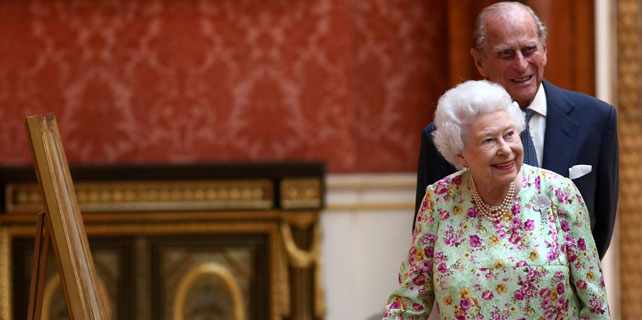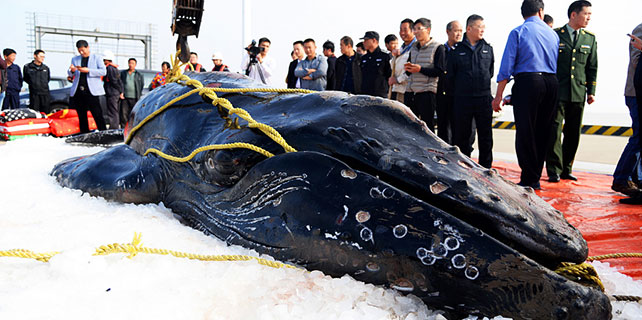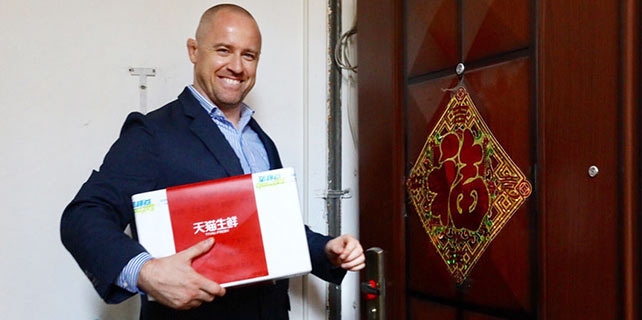When the page of literature turned
In 1978, when China's reform and opening-up was about to be launched, Ruan Chen, a 9-year-old book lover in Shanghai, was looking for more reading material.
It was not long after the "cultural revolution" (1966-76), a time when a limited number of literary and art books from overseas were published in the country.
Later that year, Ruan heard from her parents that some Western classics - such as Spartacus by Raffaello Giovagnoli, and The Decameron by Giovanni Boccaccio, both published by the Shanghai Translation Publishing House - were available in bookstores, but people had to line up to buy them with special coupons.
|
A selection of covers from popular books published since 1979. Photos Provided to China Daily |



"After the 'cultural revolution', there was a book famine in China," said Ruan, now director of the editor's office at the publishing house.
In an article about the first issue of Foreign Literature and Art, a bimonthly magazine published by the publishing house, Chen Sihe, a professor of Chinese language at Fudan University in Shanghai, wrote: "On May 1, 1978, people crowded into Xinhua Bookstores in cities across China to buy carefully chosen literary classics of new editions such as Victor Hugo's Les Miserables, Leo Tolstoy's Anna Karenina and Honore de Balzac's Pere Goriot."
All these classics were new editions of those published before the "cultural revolution", Ruan said. At the time, the Shanghai Translation Publishing House and the editor's office of foreign literature at the People's Literature Publishing House, the two major publishers of foreign literature, had just been set up.
Ruan's mother was able to buy a copy of the first edition of Spartaco available in vertical typesetting, and the first edition of The Red and the Black by Stendhal (pen name of Marie-Henri Beyle), which featured a grid-patterned cover and was part of the Grid Classics Series.
"We bought versions of The Red and the Black in both vertical and horizontal typesetting," she said as she sat behind the reception counter at an exhibition to mark the Shanghai Translation Publishing House's 40th anniversary.
The copy of Spartaco she owns was showcased on the second floor at the exhibition, together with a first edition of The Decameron. There were also first issues of the bimonthy Shijie Zhi Chuang (Window on the World) in 1978, the bimonthly Foreign Literature and Art in 1979, and the Chinese version of the French fashion magazine Elle in 1988.
Chen wrote of Foreign Literature and Art: "The magazine was founded in late 1978, when China's literary and art circles had just woken up from the 'cultural revolution' and were cautiously opening the doors and windows to foreign culture and art."
The foreign literature available at that time comprised basically classics.
Chen wrote: "Modern Western literature, however, was still regarded as a cultural black hole that we needed to treat cautiously, due to ignorance. ... At such a time (the late 1970s and '80s), young intellectuals needed to borrow universal experience from other countries to understand their situations and how they should feel about these situations. After reading those classics, young people like me simply wanted to read - and not just beautiful ancient works."
In Foreign Literature and Art, Chen found contemporary works, including Japanese writer Yasunari Kawabata's short stories such as The Izu Dancer, four works by Italian poet Eugenio Montale, Jean-Paul Sartre's play Dirty Hands and a translation of part of Joseph Heller's novel Catch 22.
"Reading the bimonthly allowed me to blend into the modern world," Chen wrote, "I found that my mind should have belonged to a new world: a mental situation in a modern social environment," Chen wrote.
Since those days, the barren landscape for books has been transformed. Last year alone, China acquired the rights to publish more than 17,400 titles from overseas.
The year 1988 was a significant one for China's publishing industry, when some of the country's biggest houses, such as Yilin Press and China Citic Press, were founded.
The growth of major publishers such as the Shanghai Translation Publishing House, Yilin Press, the People's Literature Publishing House and China Citic Press highlights the different demands of Chinese readers over time, especially for foreign books.
In 2000 the People's Literature Publishing House published the Chinese version of British author J. K. Rowling's Harry Potter and the Philosopher's Stone. The Harry Potter books have influenced a generation of Chinese children, especially those in one-child families, who have grown up with the characters in the books.
Beijing Horizon, founded in 2002, published The Kite Runner by Khaled Hosseini in 2006, which has been on the annual best-seller lists for years.
China Citic Press, known for its books on economics and management, has published best-sellers over the past two decades.
These include Who Moved My Cheese? by Spencer Johnson in 2001, Greed, Fraud & Ignorance: A Subprime Insider's Look at the Mortgage Collapse by Richard Bitner in 2008, The Innovator's Dilemma: When New Technologies Cause Great Firms to Fail by Clayton M. Christensen in 2010, Steve Jobs: A Biography by Walter Isaacson in 2011, On China by Henry Kissinger in 2012, The Second Machine Age by Erik Brynjolfsson and Andrew McAfee in 2014, and Zero to One: Notes on Startups, or How to Build the Future by Peter Thiel and Blake Masters in 2015.
Gu Aibin, editor-in-chief of Yilin Press, said that in the past 30 years, books published by the company have ranged from foreign literature to liberal arts and, more recently, popular science works, clearly mirroring the changing demands of Chinese readers.
"Thirty years ago, readers devoured anything available due to the shortage of books. Now, they choose books very carefully for an enjoyable reading experience, which is the result of 40 years of reform and opening-up. People's material lives have been greatly improved, and so have their spiritual lives."
Graduating from Nanjing University in Jiangsu province in 1986, Gu joined Yilin when it was founded in 1988 to introduce foreign literature to China, and to translate it. Apart from the best-selling Yilin Classics Series, the company led the way in introducing contemporary works of literature.
"From these works, Chinese readers learned about the latest developments in other societies and avant-garde ideas in literary creativity, which influenced many contemporary Chinese writers," Gu said.
At the three-floor exhibition marking the Shanghai Translation Publishing House's 40th anniversary, white Chinese characters hung above the entrance, proclaiming Shijie Youwo Gengda (A sail at the force, a world bigger than before).
On one wall were covers from the Translation Classics Series published in the late 1970s and '80s, including Treasure Island and The Strange Case of Dr. Jeckyll and Mr. Hyde by Robert Louis Stevenson, Pride and Prejudice by Jane Austen, Oliver Twist by Charles Dickens, The Moon and Sixpence by W. Somerset Maughan, Jane Eyre by Charlotte Bronte, Lord of the Flies by William Golding and Gone With the Wind by Margaret Mitchell.
Elsewhere, visitors could find works by writers such as W. H. Auden, Susan Sontag, Haruki Murakami, Jorge Luis Borges, Milan Kundera, Vladimir Nabokov and Philip Roth. Murakami and Kundera are extremely popular in China.
Poetry, essays, literary criticism and dictionaries were on display.
Since the Chinese edition of Country Driving, by Peter Hessler, a journalist and writer from the United States, was published in 2011, Zhang Jiren, director of the editor's office for social sciences at the Shanghai Translation Publishing House, said 30 nonfiction works had been published by the company, and many had been well received by readers.
Country Driving and River Town, also by Hessler, have each sold more than 300,000 copies in China. Shark Fins and Sichuan Pepper, a book on Chinese food by British writer and cook Fuchsia Dunlop, which was published in July, has been reprinted four times.
"Writers like Hessler, Dunlop and Michael Meyer, who wrote The Last Days of Old Beijing, observe Chinese society, people, cities and culture through foreign eyes, providing very different but interesting perspectives for us to understand China in a broader sense," Zhang said.
When Zhang, a philosophy graduate, joined Shanghai Translation Publishing House in 2003, he started editing books on 20th century Western philosophy for the Black Cover Series.
In 2006, the company changed its strategy and decided to target a wider market.
Zhang had always been interested in Hessler's writing in The New Yorker magazine, and when the author finally decided to publish his books in Chinese, Zhang approached him. The books have sold well.
"I love River Town the most because it is well written. Its style is unique. Through the descriptions of details in Chinese people's daily lives, you can see the changes that have taken place in China in the past three decades, which I think is also why Chinese people like him."
In the company's nonfiction series, Zhang and his colleagues later published more books, not only about China but also on topics such as public health systems, loneliness in modern society and aging problems, "in which we can learn from Japan", Zhang said.
Unlike Zhang, 30-year-old Gu Zhen is a newcomer to Shanghai Translation Publishing House, working in the literature office. Gu joined the company in 2013, and apart from editing books, he writes a column for the Shanghai Book Review and also translates books.
"If you look at the contributors to STPH's Classic Translations Series, many of them are also translators," Gu said. "It's a company tradition. Editors can do things they like - more than just editing books - such as writing or translating."
In March the company published The Dyer's Hand and Other Essays by W. H. Auden, which was well received by literary critics. The work is a collection of the author's essays, including his lectures as professor of poetry at Oxford University in which he gives his opinions on poetry, art and life.
Gu Zhen said: "It's always fun to see how these literary masters talk about literature and art. Because they hate mediocrity ... especially in opinion, language and expression, they give very interesting interpretations."
Books that feature well-known writers discussing literature and art are becoming more popular, with Nabokov's Lectures on Literature, Lectures on Russian Literature and Lectures on Don Quixote, published by the Shanghai Translation Publishing House, selling well.
"Before, we relied on Lolita to sell Nobokov's other works ... but only Lolita sold well. But this year these lectures on literature have sold well on their own without the influence of Lolita," Gu Zhen said.
He has been attempting to tread his own path as an editor, striving to find a balance between his own tastes and those of the public.
"One of the projects that I am working on concerns the five books by Edward Aubyn that feature Patrick Melrose, which were adapted for a TV series in Britain, Gu said.
"I put forward the proposal before the series was broadcast. Aubyn writes so well that I wanted to bring the books to China.
"I found five people to translate them. Their ages vary, enabling us to experience Melrose at different ages."
yangyangs@chinadaily.com.cn
|
An exhibition marks the 40th anniversary of the Shanghai Translation Publishing House. The growth of major publishers highlights the different demands of Chinese readers over time, especially for foreign books. Photos Provided to China Daily |
( China Daily Africa Weekly 10/05/2018 page20)


















